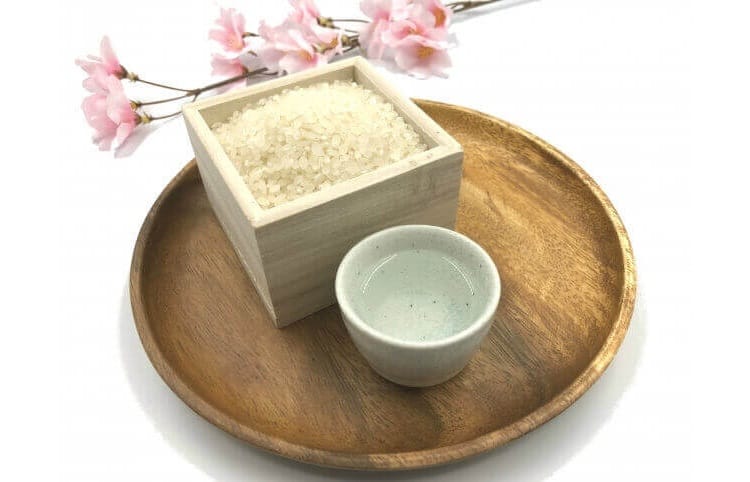
Once the rice has been processed, the next process"Sashimi"is. It is also called “Seikan”.
Since long ago, sake brewing has been famous for its famous sayings: “Ichikoji”, “Nimo”, and “Sanzo”. These are words that express the importance of the sake brewing process in order. That meansThe most important thing in Japanese sake brewing is `` Sashimi '', then `` Sake (Sake mother) '', and the last is `` Sashi '' where moromi is prepared.It means that.
The finished candy is also used to make sake mothers and candy. It is considered to have the greatest influence on the quality and taste of sake. For this reason, it seems that the veteran is often in charge of experienced veterans who have been involved in sake brewing for many years.
In the first place, what is the nephew necessary for?
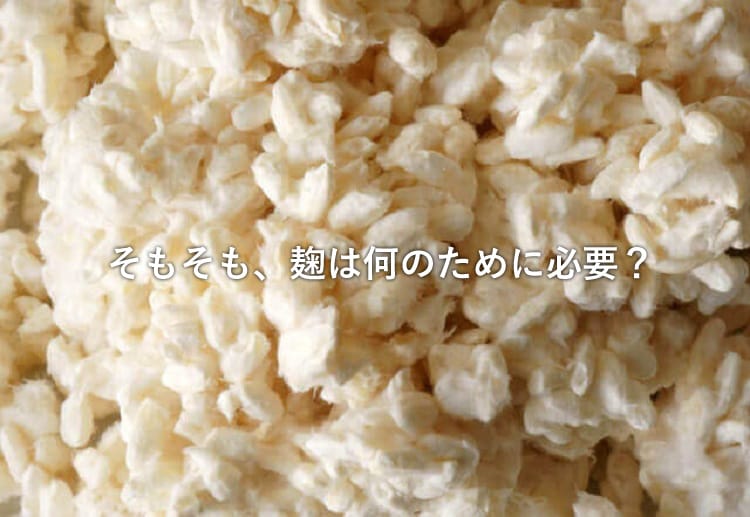
Necessary for sake brewingA rice cake is a rice that has been bred by sprinkling gonococcal spores on steamed rice.You read it right!
So why do you need straw to make sake? that is,Because rice does not contain the sugar necessary for alcohol fermentation.
It is there that the koji mold is activeSaccharification enzyme (amylase)is. The starch contained in rice has a structure in which glucose is tightly connected.Saccharification enzymes break down (saccharify) this structure and turn glucose into a state that can be eaten by yeast..
This is the most important role of koji molds, and the main purpose of koji making is to propagate these koji molds in large quantities.
This saccharifying enzyme has a very strong enzymatic power, and when it is eaten as it is, it tastes soft and sweet and has a sweet aroma reminiscent of chestnut. Depending on the brewery, there are places where you can taste it when you visit, so if you have a chance, please try it.
In addition, Aspergillus oryzae produce umami ingredients such as vitamins, amino acids, and fragrances, which are nutrients for yeastThere is also the work.
Because sake makes rice cake with rice, this rice cake is"Malted rice"It is called. By the way, this rice bran is mixed with salt. Since it became a boom several years ago, many people may have used it for cooking.
By the way, rice bran can be made other than rice. For example, shochu uses not only rice bran but also wheat straw made by sprinkling bacillus on wheat. Generally, rice bran is used for rice shochu, shochu shochu, and brown sugar shochu, and wheat straw is used for barley shochu.
製造 manufacturing process
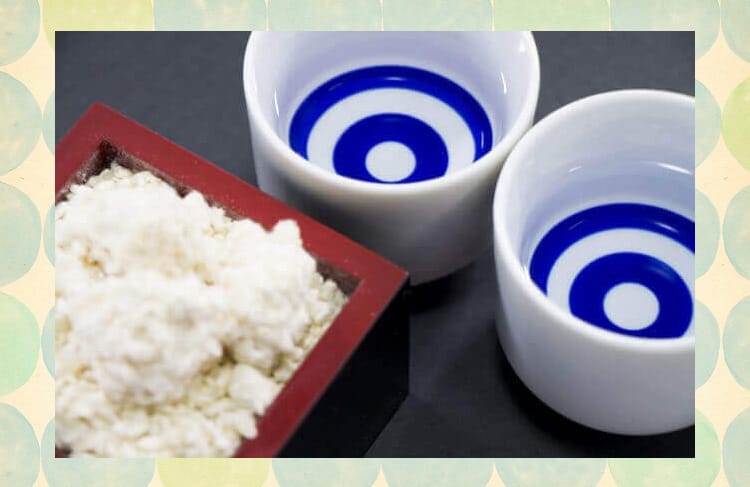
About 20% of the processed rice is turned into rice used for koji making. By the way, the remaining 10% will be used for making sake mothers, and 70% will be used as rice to be put directly into the straw and used as yeast food.
Rice processing is a complex process, but the process of making koji requires many different processes. The manufacturing process of firewood takes place in the first half"Floor work"(Tokosagi) and the second half"Shelf work"It is roughly divided into 2 (Tanasagiyo).
Sashimi is made in a special room called `` Kojimuro ''. The temperature is kept at about 30 ° C and the humidity is kept at about 60 to 70% so that the gonococci that are vulnerable to cold can actively propagate.
The cocoon chamber is always kept clean so that bacteria and dirt other than koji mold do not adhere to the steamed rice. Before entering the room, be sure to disinfect your hands, change to a lab coat, and wear a hat.
In addition, the doors of the chamber are often sealed so that they should not be opened as much as possible. Even though it is sealed, the inside of the chamber is characterized by a structure that allows proper ventilation.
Basic room with good heat retention and good ventilationIt is. In order to keep temperature and humidity in an appropriate state, air is circulated by adopting a structure that takes in outside air. Since gonococci are living creatures, fresh air is required.
In addition, ventilation is very important because there is a risk that the person making the koji will be deficient by the carbon dioxide produced by the koji mold.
・ Floor work
A floor is a table on which steamed rice is placed. Here, work from pulling in to serving.
① Withdraw
Sashimi starts with a work called “retraction”.Withdrawing is to bring steamed rice that has been cooled to about 30 to 35 ° C into the kitchen.Say.
The steamed rice brought in is piled up on the floor and covered with cloth for a while to keep the temperature uniform.
② Seeding
When the temperature becomes uniform after 2-3 hours after drawing, the steamed rice is broken down and spread evenly on the floor. This flattening work requires considerable power and is more labor than it looks.
And next to thisWork of sprinkling on the spread steamed rice, putting the spore of koji mold called `` seeds ''I will do it. this,"Seeding"Is called. Also called “seed cutting”.
Although it may seem simple at first glance, it is more difficult than expected to sprinkle seeds so that they can be distributed evenly, requiring skill. By the way, Japanese sake is used for soy sauceMost of jaundiceis. However, in some cases, white gonococcus, black gonococcus, and red gonococcus are used.
By the way, for seeds,"Sprouts"There is another name. If you have read "Moyashimon", you may know it. It is a unique manga that deals with microorganisms and is a popular work that has been dramaized and animated.
The main character of Moyashimon is a male university student whose parent family is a soy maker, but has the special ability to see fungi and viruses with the naked eye. Even more surprisingly, he was able to talk with the fungi (you can speak Japanese) and grab it with his finger, so it was a very unusual setting.
If you have a chance, please read manga and watch anime and dramas. It is recommended not only for gonococcus and yeast, but also for studying sake brewing.
As an aside, the ending song of the anime's 2 period is called “Saikin”. The name of the bacterium appears on the parade in the lyrics, so if you sing it, you will become familiar with the bacterium. I often sing at karaoke.
By the way,The seed came to be called sprouts because the spores of Aspergillus oryzae grew, and the word “moe” meaning that the flowers were sprouting disappeared.It is said that. Although it has been a long time ago, it seems that the name “sprout” is still used in sake breweries.
③ Floor fir
When seeding is over,Mix well so that the sprinkled gonococcal spores spread evenly to every corner. This work"Floor fir"Is called.
It is done using nerves so that rice does not collapse. When the floor is finished, pile it up again on the floor and put it on the cloth for a while.
My goal is,To maintain a high temperature and humidity, and to prepare an environment where bacteria are easy to propagate.
By the way, the temperature of steamed rice"Rice temperature"Is called. This temperature is an important factor that governs the subsequent growth rate of koji molds, so detailed settings are made according to the koji use (for liquor or koji) and the type and amount of koji.
④ Cut back
After about 10 to 14 hours after the flooring, the surface of the steamed rice grains dries and the grains stick together and form a hard mass.
there,In order to make the temperature and moisture of the steamed rice uniform and give oxygen to the koji mold, we will loosen the lump so that it will fall apart.. This work"Cut back"Is called.
At this point, steamed rice is still very hard, so it is a heavy labor. As I mentioned earlier, the temperature of the chamber is set to around 30 ° C, so it's a work that gets sweaty. The steamed rice is then piled up again and covered with a cloth.
⑤ Prime
After a few hours after switching,White spots will be visible on the steamed rice grains. This is the spotProof of gonococcus breeding.
If left as it is, there is a danger that the temperature will rise too much due to the heat generated by the growth of Neisseria gonorrhoeae and stop growing.
there,Dissolve the steamed rice that has been piled up, and put it in a small wooden box called a lid at a fixed amount (rice 1) to make it easier to control the temperature.. This work"Prime"It is very important to control the speed of the subsequent koji mold growth.
・ Shelf work
After the floor work is finished, place a lid with a basket on the shelf and perform the following work.
① Intermediary work (everything)
After a few hours, the temperature of the steamed rice rises again due to the heat generated by the rice bran.34 ~ 36So that the temperature risesLower by 1 to 1.5 ℃There is a need.
Spread the steamed rice and make it about 6 to 7cm thick. this"Intermediate work"Is called. The lid with the jar is stored in layers and temperature is controlled.
The method of stacking an empty lid and a lid with a bag is sometimes used.
② Ending work
After the middle job, the temperature of the steamed rice rises again and rises to about 37 to 39 ° C after several hours. Therefore, stir again,Lower the temperature by about 1 to 2 ℃Need arises.
Spread steamed rice, create grooves to increase surface area, prevent rapid rise in temperature and promote evaporation of excess water. this"Closing work"Is called.
③ Dekoji
When the work is finished and the cocoons are finished in the ideal condition, they are taken out of the tub and allowed to cool.To prevent further gonococcal growth.
Typically,Liquor bottles will be served after about 12 hours, and bottles for liquor will be served after about 8 hours. this"Departure"Is called. That ’s how it ’s called (laughs).
④ Withering
The cocoons from the cocoon room are spread out and placed in a dark and dry place.Sleeps for about 20 hours, releasing excess heat and moisture. Finally, the sashimi is completed.
In general, the time it takes from pulling in to getting out is48-50 hours for a liquor's coffee, 43-45 hours for a coffeeis. Including the time of withering, it will be almost 3 days.
During this time, people who make cocoons often suspend sleep and continue working day and night. It ’s a boring job without passion and physical strength.
There are many other ways to make a coffin
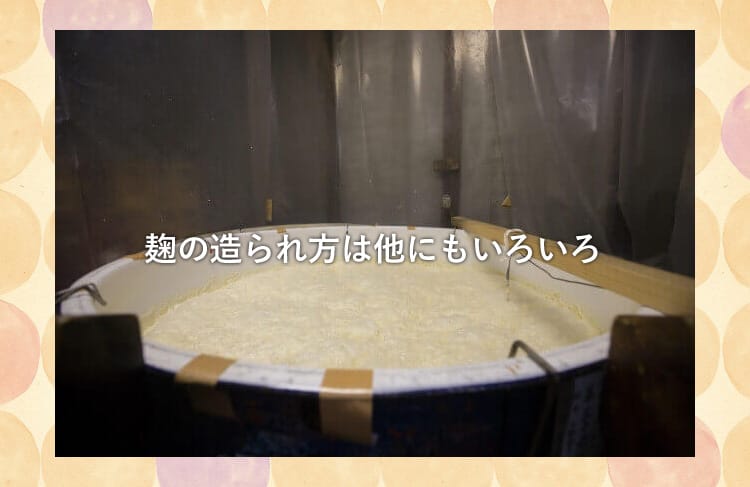
The method of making a jar using a lid that we have introduced so far is a traditional way,"Cover method"It is called.
Since the lid is small, the number of management is inevitably increased, and the temperature and humidity change depending on the position of the lid..
In order to properly manage the cocoons and to propagate the gonococci uniformly, all the lids of the cocoons stacked on the shelves must be rotated. It can be said that it is a heavy labor that requires a lot of manpower to move and reload every 2 to 3 hours.
In addition, it is a method that requires skilled skills."Machine machine"Or use a box larger than the lid"Hakama"This method is more general.
The mechanical type controls the temperature, humidity, and ventilation of the kite with a computer.To do. Machines are called iron making machines, and there are full-automatic and semi-automatic machines.
Various types of machines are manufactured, such as disc type iron making machines, tent type iron making machines that cover the whole with a sheet-like cloth, and a simple type called Visor with a wooden cover.
The amount on the lid is small, about 1.5kg,Fine temperature control and easy to make target quality cocoonsThere is an advantage. Therefore, there are also sake breweries that are particular about making the whole amount using the lid method.
Also, even if you use machines for making sake brewing and regular sake, making brewing for high-class sake such as Daiginjo sake and sake to be exhibited at the appraisal is done using the traditional lid method. There seem to be many patterns to use depending on the specifications of liquor.
In this way, there are various variations in how to make koji depending on the brewery. Even if you visit a sake brewery, there are many things that you can't see inside the room, but if you have a chance, it will be interesting.
A variety of finished cocoons
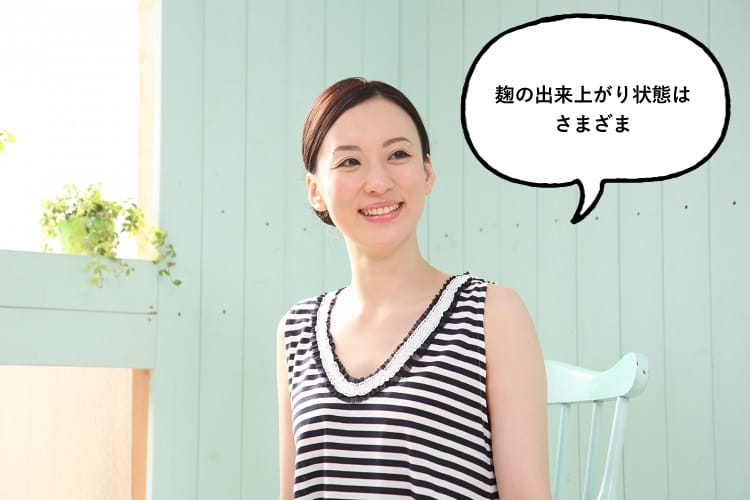
The key to the finished kite is that you can sleep while sleeping.`` Rupture ''is. What is rupture?Aspergillus propagationYou read it right!
A good habit"Total destruction"と"Breakthrough" (Tsukihaze)It is roughly divided into 2.
First,Total rupture is a state in which the mycelium of Aspergillus oryzae covers the entire surface of the steamed rice and the mycelium propagates deep inside.Say.
In general, it is used when you want to finish the sake with a thick navy such as pure rice sake. In addition, because saccharifying enzymes are strong, they are often used for sake mothers who require strong saccharifying power.
nextIt is a breakthrough, but this is a state where the mycelium of Aspergillus is dotted without covering the whole surface of the steamed rice, but the inside is a state where the mycelia are propagated deeply and firmlySay.
Compared to total sperm, saccharification is weak, but it has moderate proteolytic power and is used when you want a light, light and refined liquor finish. It is often used for the preparation of ginjo sake and daiginjo sake, and the preparation of koji.
Unlike this 2,Unfortunately, there are things that have failed, "Baka sword" and "Nuri sword".
First of all, stupid sterilization refers to the state in which the mycelium of Aspergillus is too much on the surface and inside of steamed rice. Rice grains break down with enzymes and become soft, and if you hold them down, they will be easily crushed.
Next, it is coloring sperm, but the mycelia of Aspergillus oryzae are growing on the surface of steamed rice, but the hyphae do not enter inside.
In this way, the gonococcal hyphae are not simply propagated,It is necessary to find the appropriate degree of severance and stop breedingIt is. It's really difficult and deep. I feel like I can understand the meaning of the saying “Ichigo, Nijo, Sanzukuri”.
Summary of terms named 用語
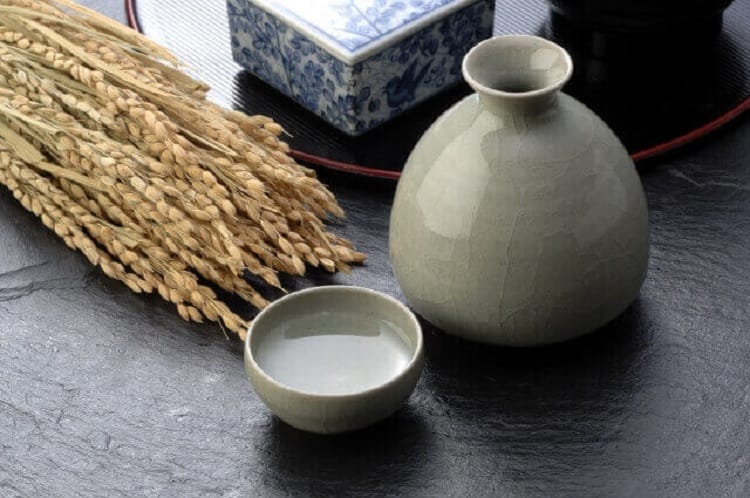
So far, we have introduced sushi making, but there are many terms named sushi and there are many similarities, so it seems that many people get confused before they get used to it.
Let's organize it here.
Aspergillus: A microorganism that is a type of mold. Japanese sake is mainly used with yellow koji mold. In 2006 year, it is also certified as a Japanese “national fungus”.
Species: Bacilli spores. Sprinkle on steamed rice to propagate. Also called “sprouts”.
Sticky rice: Rice used for making strawberries.
麹: A cocoon made as a result of the completion of sushi making. Generally speaking, it is a general term for grains that are propagated with koji molds.
Rice cake: A rice cake made by breeding koji mold on rice.
Looking back, it ’s a little confusing. However, terms such as “rice koji” are also written on sake labels.
If you understand these words correctly, I think that sake will become more and more fun.
